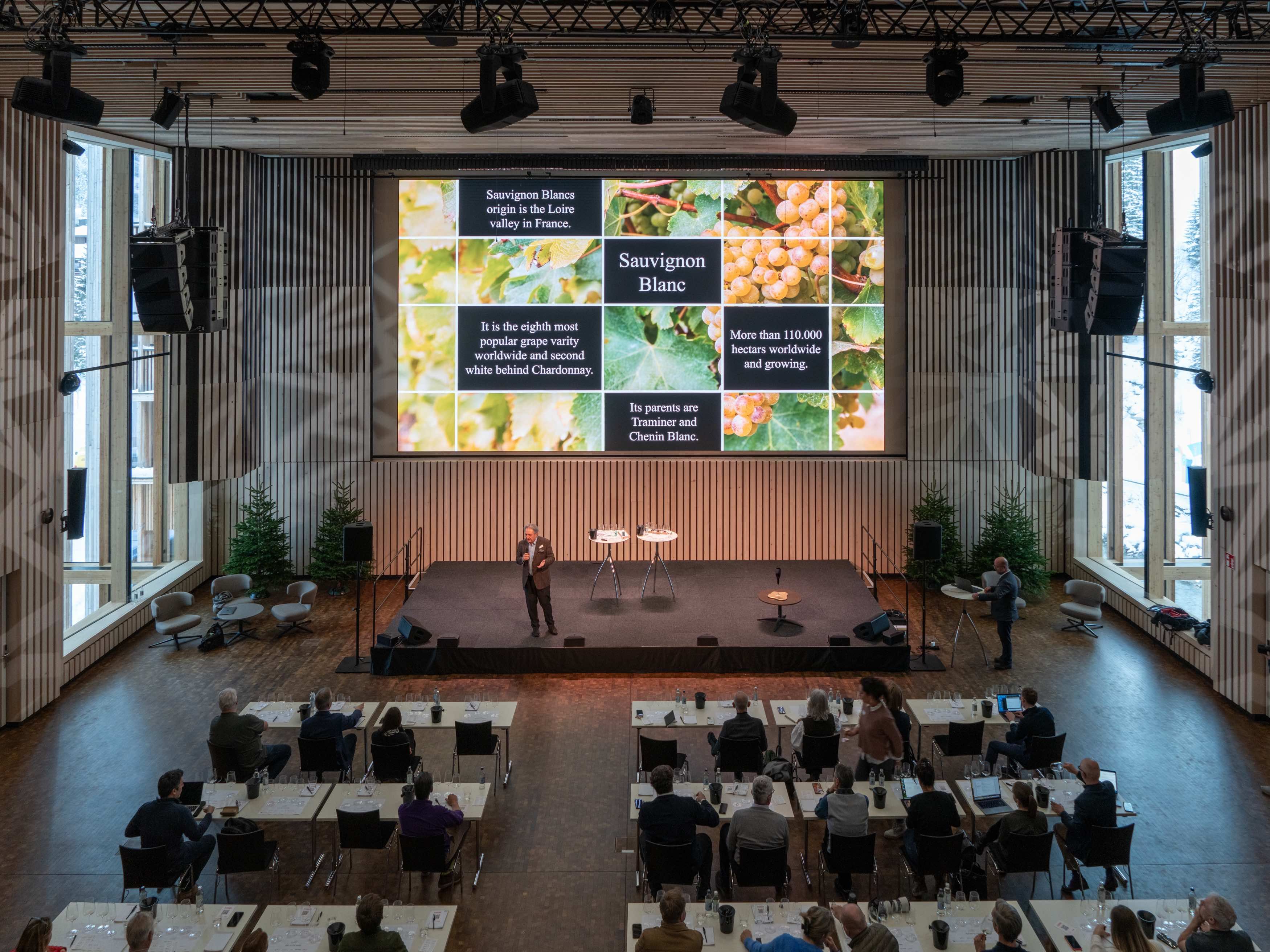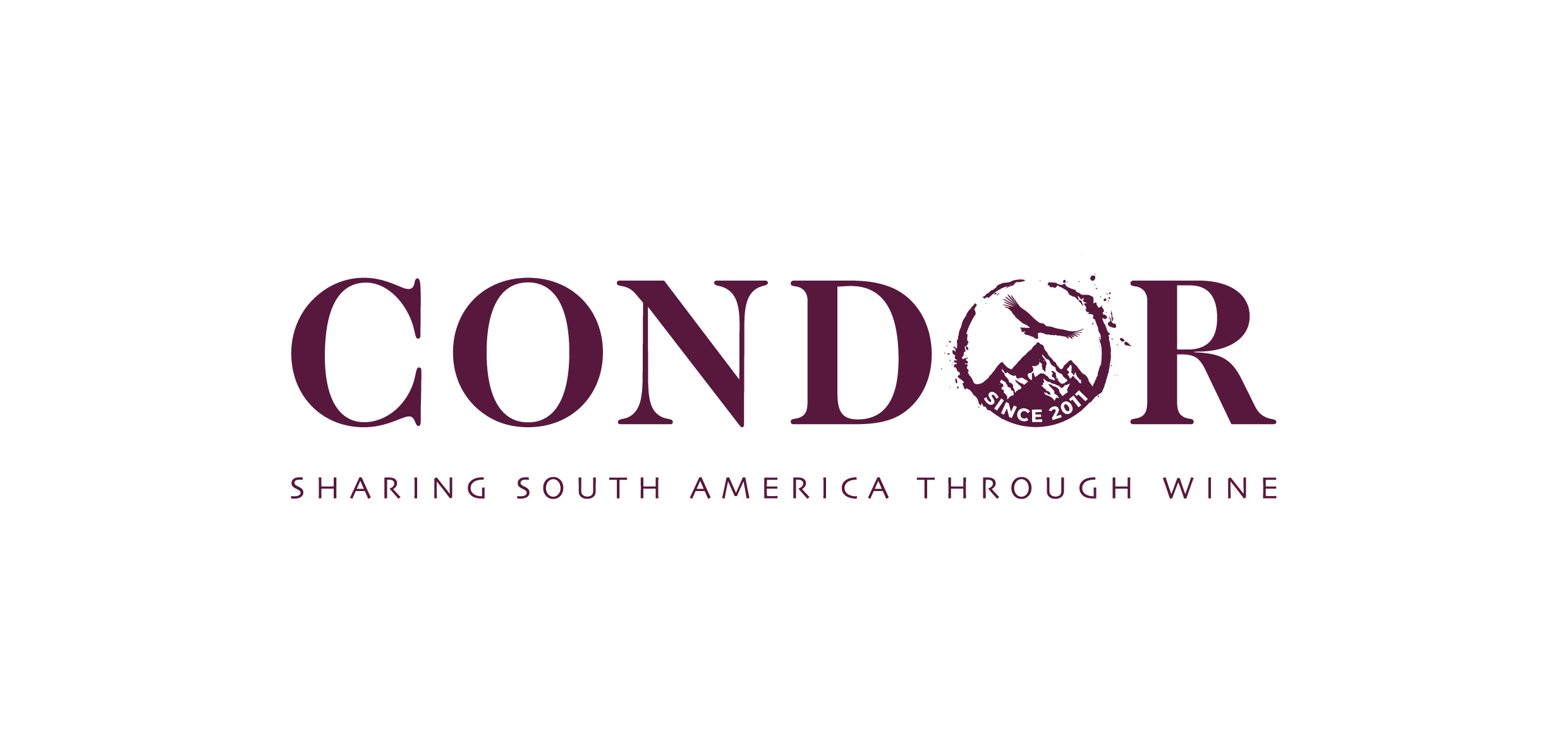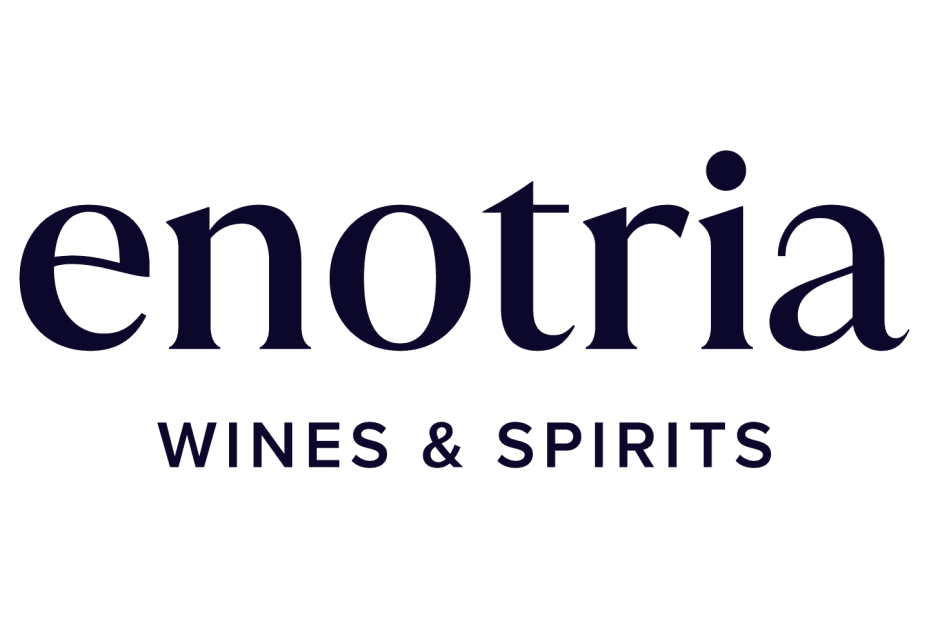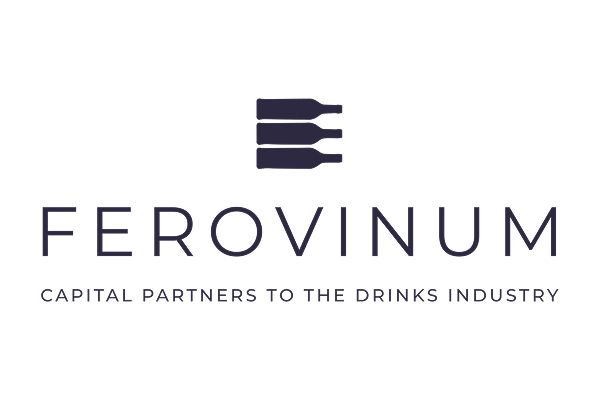Arlberg Weinberg has existed for less than a decade, yet it has already established itself as an unmissable event in the wine industry calendar, deftly combining agenda-setting, thought-provoking debate, Alpine gastronomy and, of course, the best of Austrian wine.
Lech’s brand-new-yet-rustic, wood-panelled, Lechwelten Convention Centre played host to the main discussions and tastings, with Sauvignon Blanc and Chardonnay taking centre stage, alongside a debate and tasting of so-called ‘alternative’ wines, a keynote session dedicated to the use of water in wine production, and a competition between the resort’s top hotels to determine ‘Lech’s best bottle’, ultimately won by the Sandhof Hotel for a Tement Sauvignon Blanc Ried Zieregg 2017.
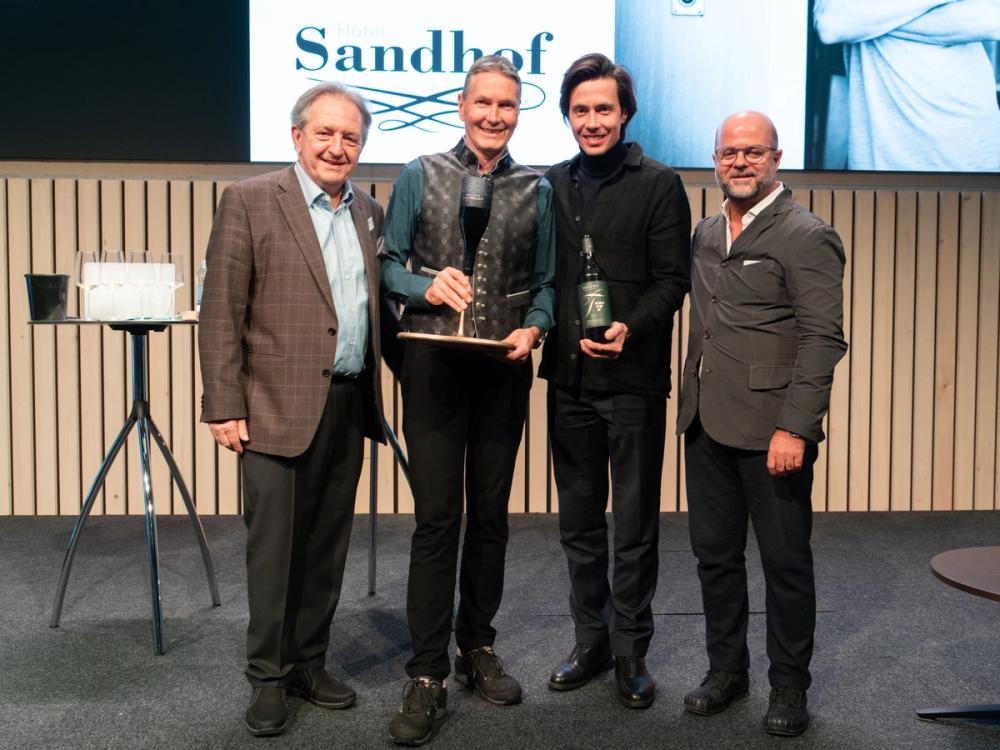
Armin Tement and the team at the Sandhof hotel who won Lech's best bottle award
There were also masterclasses in nearby venues, forming a festival ‘fringe’, including a showcase for Steiermark, complete with aged examples, and an introduction to the wines of Eisenberg DAC, from Trink’s Paula Sidore.
Attending all the sessions, Austrian Wine Marketing Board chief executive, Chris Yorke, told me was delighted to support an event that has grown in stature to become a fixture in the wine calendar.
“Arlberg Weinberg helps us to bring top international decision makers to Austria and discuss important issues facing the international wine trade as well as tasting some terrific Austrian wines. It also helps put a focus on those wines in one of the top ski resorts in Europe. I feel Arlberg Weinberg has the potential to become the Davos for wine," he says.
What’s more, for those of us keen to blow away the cobwebs and take advantage of the early season snow, ‘Ski with Austrian Wine’ offered experienced skiers an opportunity to hit the slopes first thing, with each exhilarating outing led by one ofthe country’s top winemakers.
Wine without water
Lack of water is the issue that threatens the future of agriculture, yet the wine industry arguably continues to be profligate with it. Once taken for granted, water is now in such short supply that it poses an existential crisis to some notable regions.
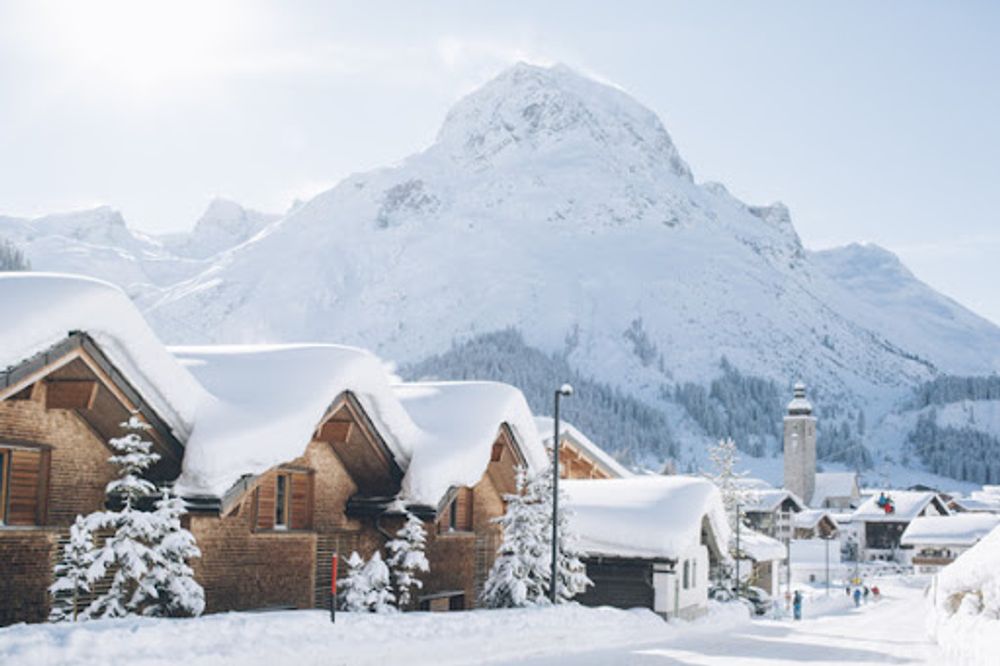
Arlberg Weinberg offers a very different setting to other major wine events such as Wine Paris or ProWein
Never one to shy away from a contentious issue, plant scientist Dr Jamie Goode led a discussion on the industry’s use, or misuse, of life’s elixir.
Joined by Professor of Viticulture, Dr Alain Deloire, and two winemakers representing very dry regions, Sara Pérez from Priorat’s Mas Martinet and Arianna Occhipinti from her eponymous family winery in Cerasuolo di Vittoria, Goode posed an ambitious list of at least a dozen questions that he hoped to address in the session, from how much water a vine actually needs, to the suitability of certain varieties, the role of old vines, the relationship between water and ripening and the measures, including shade cloth and misting, that can be taken to mitigate the effects of sunlight and heat stress.
Pointing out that vines obviously need water to survive, Goode cautioned that the term ‘drought resistant’ was “a fantasy”, though he reminded the audience that the vine is a parasitic climber, its roots designed to compete with neighbouring plants in the soil, as he also explained the role of stomata, the small pores on the leaves that regulate photosynthesis.
He also touched on the issue of ‘epigenetic adaptation’ (the process of gentle transformation that brings about changes without altering core DNA) which might explain the resilience of old vines in water-deprived areas, a phenomenon that scientists continue to study, and the role of ‘key line management’, where rainwater is channelled through vineyards to reduce waste.
Explaining that water availability is the most important climate factor in the definition of terroir, Deloire also talked about his work profiling the roots of vines: “When you look at the root systems in old vines, you don’t have old roots because the vine is constantly renewing its root system.”
Occhipinti talked of ever earlier harvest dates, with this year’s starting on August 6th, revealing there had been just 160mm of rain between January and August: “when you have a vineyard without enough rainfall, the vines are dying … in this situation the vines will never adapt.”
For her part, Pérez detailed the various water preservation techniques she was using, including sheep’s wool to retain moisture.
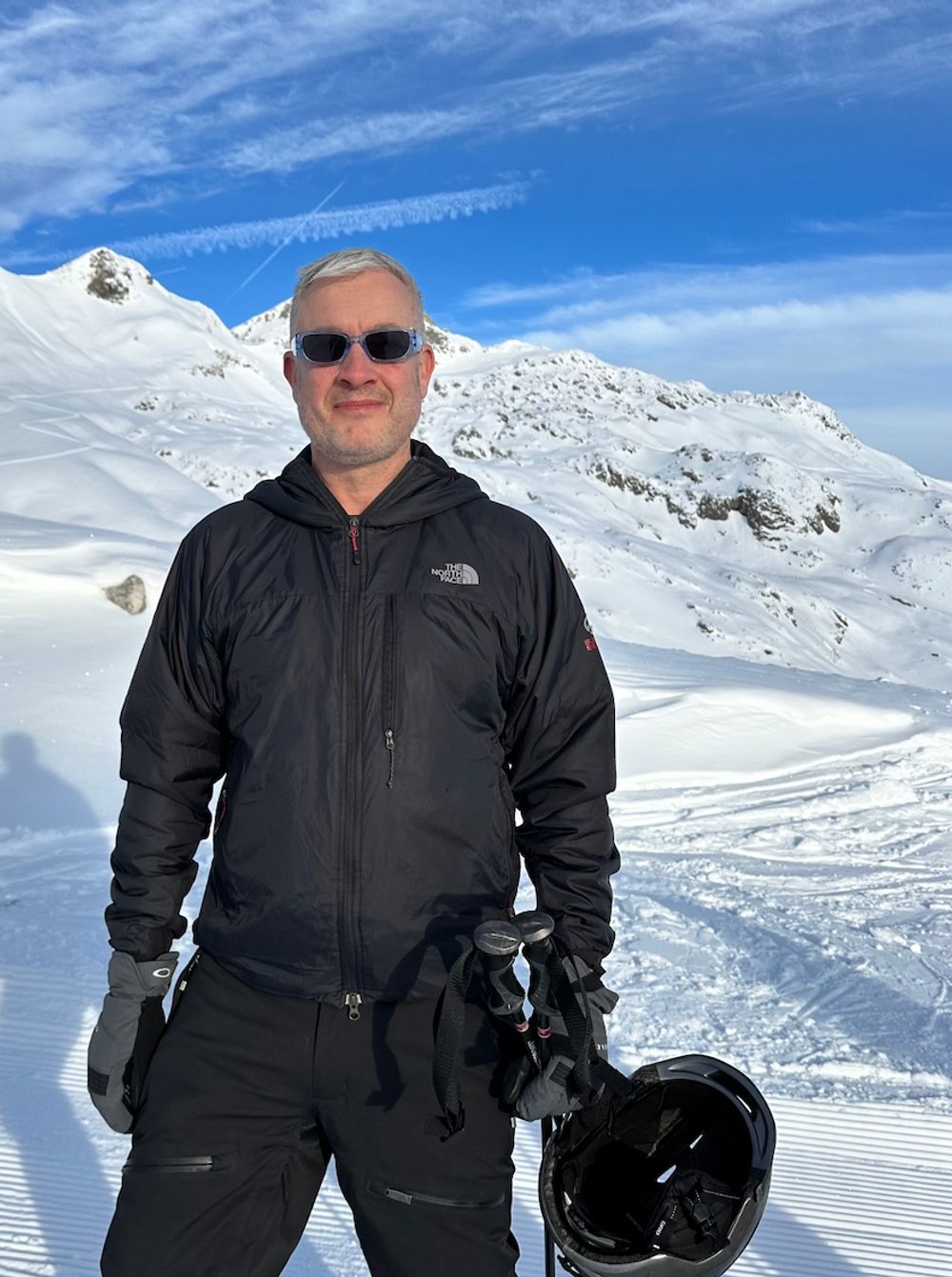
David Kermode, The Buyer's intrepid reporter at Arlberg Weinberg...
Austria's Sauvignon Blanc and Chardonnay
Austria is a white wine country, with the style accounting for the majority of production. Such is the success of its undisputed calling card, Grüner Veltliner, it can be easy to forget that there’s a host of other white varieties, from relatively niche ‘discovery’ grapes - such as Roter Veltliner or Rotgipfler - to comfortingly familiar ‘international’ ones - like Sauvignon Blanc and Chardonnay.
That said, the latter varieties also exhibit distinctive character traits of their own, and in the case of Chardonnay even an alternative name, that give Austria’s offering an idiosyncratic edge.
Sauvignon Blanc is planted on 1,739 hectares, accounting for 3.9% of Austria’s grapes, with more than half of it grown in the south-easterly region of Steiermark (aka Styria), while Chardonnay (also known as Morillon) accounts for 4.4% or 1,926 hectares across the country. By way of comparison, Grüner Veltliner is planted on 14,296 hectares, representing a third of all plantings.
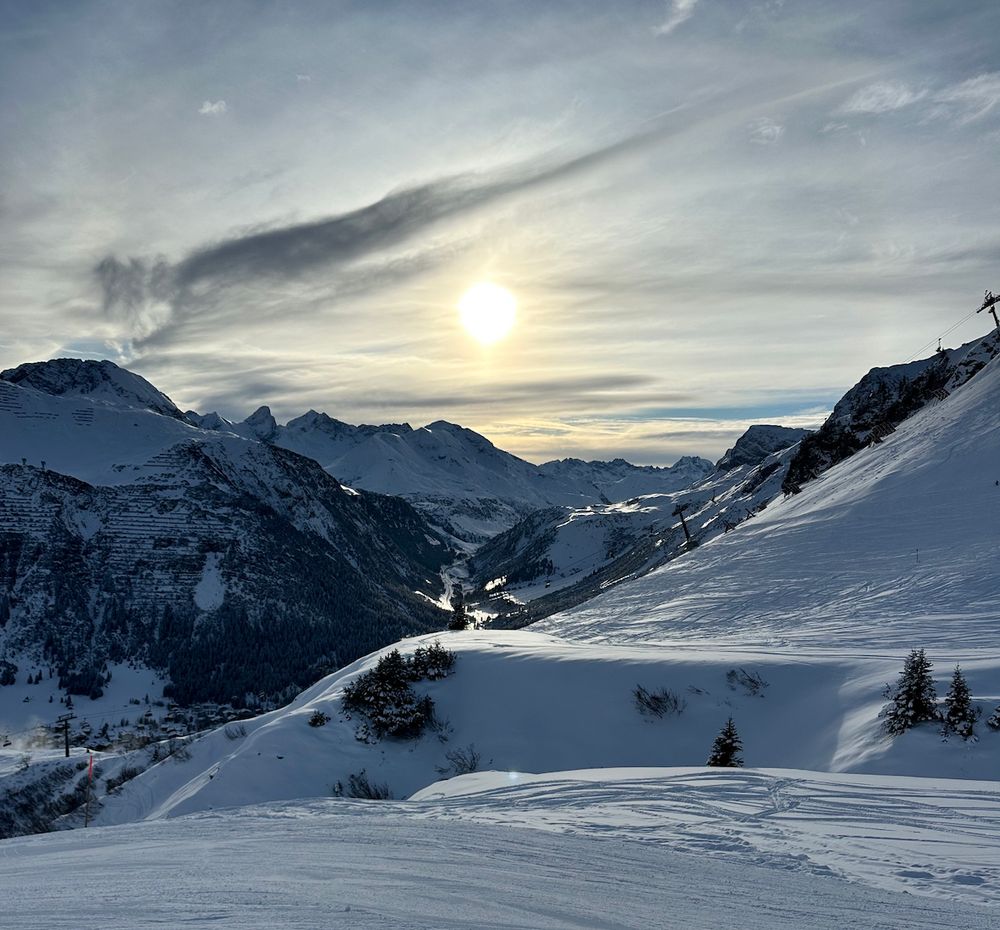
Arlberg Weinberg is truly a chance to get away from it all to explore both the beauty of Austria with an in-depth wine conference
A panel discussion chaired by Patrick Schmitt MW explored the potential of both varieties, with contributions from panellists Willi Klinger, Yorke’s predecessor as head of the Austrian Wine Marketing Board, Canadian vlogger Cokie Ponikvar and Aleks Zecevic of Wine Enthusiast, with the consensus being that Chardonnay and Sauvignon Blanc offered enormous opportunities for Austria, albeit at a premium price point due to a higher cost of production than many rival regions.
Later, to underline that potential, wine writers Willi Balanjuk and Daniela Dejnega co-presented a tasting of 16 wines, with the following five those I personally rated highest:
Wohlmuth Sauvignon Blanc Ried Hochsteinriegl 2021 Südsteiermark
From red schist soils, fermented in a large 500 litre vats, a charming Sauvignon Blanc with subtle citrus, elderflower and orchard fruit character, exhibiting lithe depth and layered complexity with a herbal twist to the finish.
Tement Sauvignon Blanc Ried Ehrenhausener Zieren 2015 Südsteiermark
Aged eight years in barrel and bottled in December last year, a remarkable wine with the gentle tertiary notes underpinned by some notable freshness and stony minerality.With pithy citrus, butterscotch and hints of sorrel and spice, the purity of fruit is impressive.
Bründlmayer Chardonnay Ried Langenloiser Steinberg 2021 Neiderösterreich Reserve
From the toasty, reductive nose to the intensity of the citrus and stone fruit, an accomplished wine that still needs a little time to evolve.Beautifully balanced, well integrated oak gives plushness, but its the purity and concentration that’s most impressive.
Kollwentz Chardonnay Grosshöflein ‘Gloria’ 2013 Burgenland
An elegant wine that’s ageing with great grace, with plump orchard fruits, grilled pineapple and peach, kept in check by a vibrant grapefruit acidity, with lovely weight and a memorable saline finish.
Kracher Cuvée ‘Grande Cuvée No 4’ TBA 2020 Burgenland
Representing the only producer currently traded on the Place de Bordeaux, a blend of 60% Welschriesling and 40% Chardonnay, an enchanting sweet wine with a nose to sit back and savour, its 200+ grammes of residual sugar exquisitely balanced by a lime acid line, with bags of ripe apricot, bruised apple, wild honey and a hint of quince.
Austrian alternative wines
On the third day, ‘alternative’ wines took top billing. Though the term ‘natural wine’ is not officially defined, Austria boasts many compelling examples, their prominence undoubtedly related to the high number of vineyards classified organic (24% of Austria’s vines) and also those certified biodynamic (3% overall representing 14% of those organically cultivated).
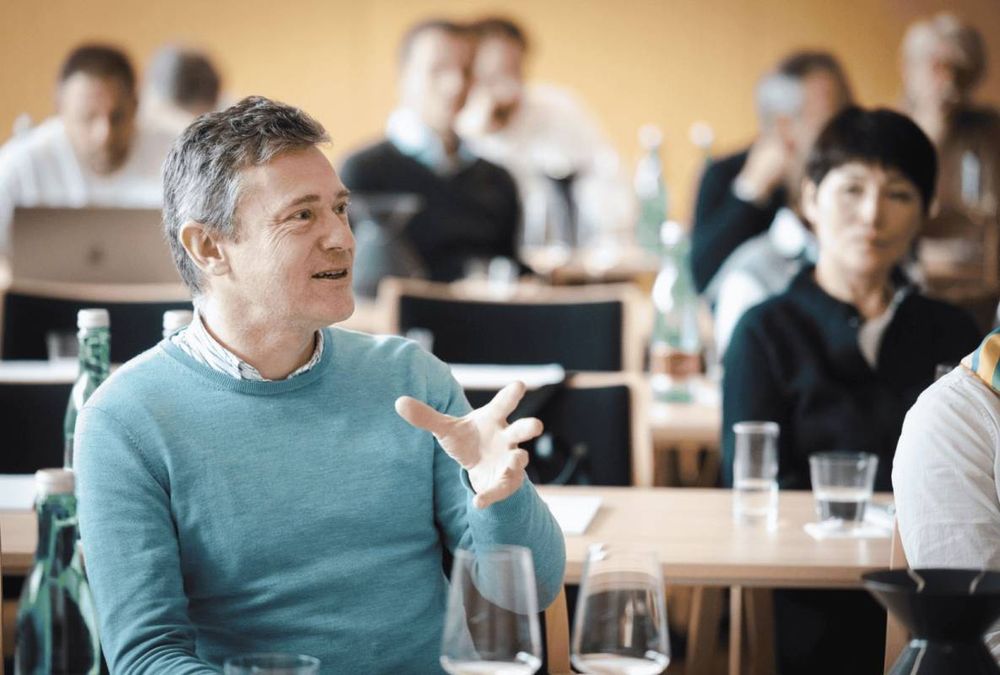
Simon Woolf helped chair a debate on how the natural wine category is evolving
Posing the question ‘are terroir and natural wines diverging?’ there was spirited debate in the morning session. Chaired by author Simon Woolf, editor of The Morning Claret, the panel featured Raw Wine founder Isabelle Legeron MW, Andreas Wickhoff MW of Weingut Bründlmayer, winemaker Katharina Wechsler of Rheinhessen winery, Wechsler, with Sara Pérez also making a return to the stage.
Talking about the “high wire act” of making natural wines, Woolf said that “what was once ill-defined and very free is gradually coming into more focus,” while Legeron pointed out that “natural wine is actually nothing new, modern winemaking is a very recent innovation” before talking about how the category has evolved: “It has changed a lot in a very short space of time (and) now it is hard to get hold of certain bottles.”
Later, Aleks Zecevic returned to the stage to present his own selection of Austria’s alternative wines, with the session introduced by Yorke who revealed that when he joined as chief executive, he was intrigued to see that 20% of the country’s exports were officially listed as ‘non-quality wines’.
Curious to know more, he realised that these wines frequently commanded higher prices. Zecevic said the labelling laws needed reform as the sector represented a missed opportunity, with many special wines going without a definition of provenance.
Of the 15 wines Zecevic showcased, these were the five to which I gave my highest scores:
Christian Tschida Riesling ‘Laissez-Faire’ Burgenland 2022
An intriguingly delicate nose with orchard blossom and pithy lemon, leading to a complex, nuanced palate with dense citrus and pear, washed by a subtle herbal undertow and a faintly chalky finish.
Martin & Anna Arndorfer Rosé Zweigelt 'Rosa Maria’ Österreich 2023
A cloudy pomegranate-coloured rosé Zweigelt, pressed over the skins of Grüner Veltliner, offering an enchanting, perfumed nose of alpine strawberry, sour cherry and Turkish Delight, with a lovely freshness and smooth, tangy texture.Just 11% ABV, so gorgeously gluggable.
Rosi Schuster St Laurent Rusterberg Ried Repistye Zagersdorf Burgenland 2022
Produced from 65-year-old vines, offering an inviting nose of raspberry, red cherry with hints of calf’s leather, crunchy, complex and detailed, with fine tannins and an intriguing savoury backbone.
Johannes Trapp Blaufränkisch Ried Prellenkirchener Spitzerberg 1ÖTW Carnuntum 2020
A wild and enticing nose of foraged blackberry, plum, granite and fresh herbs leads into a vibrant, pure and juicy fruited wine with an elegant tartness and a firm, refreshing minerality.
Weninger Blaufränkisch ‘Say’ Weinland 2021
Damsons, red cherries and blueberries lead the charge in this vibrant wine that balances taut cranberry acidity with wild, generous, juicy fruit, supported by an upright mineral backbone.
* David Kermode was a guest of Wine Austria at Arlberg Weinberg. Wine Austria is a commercial partner of The Buyer.
* You can find out more about Arlberg Weinberg here.
